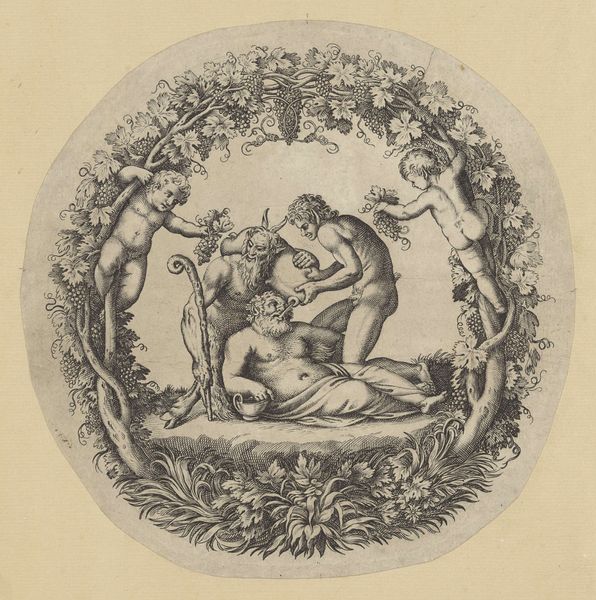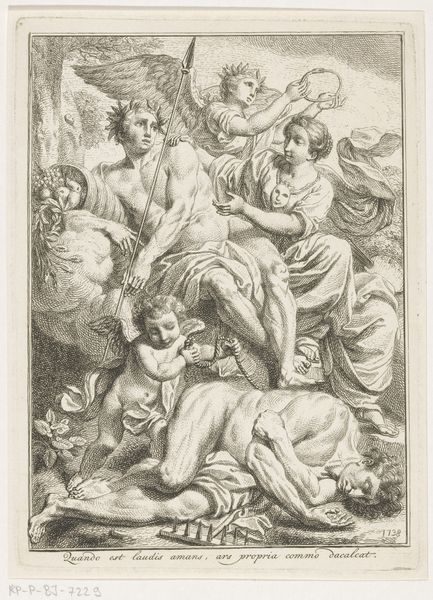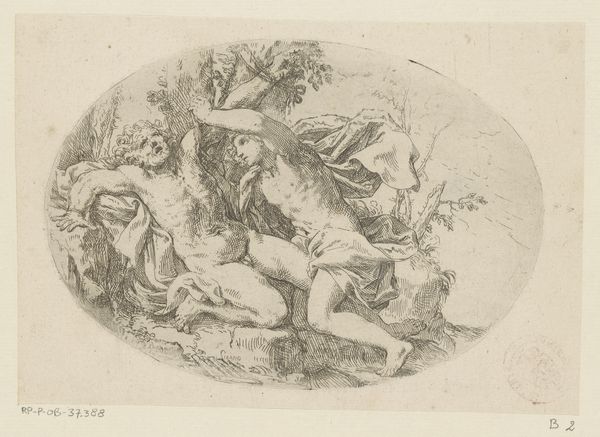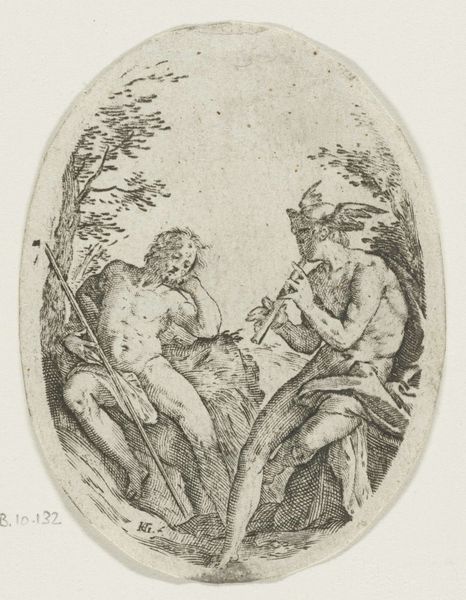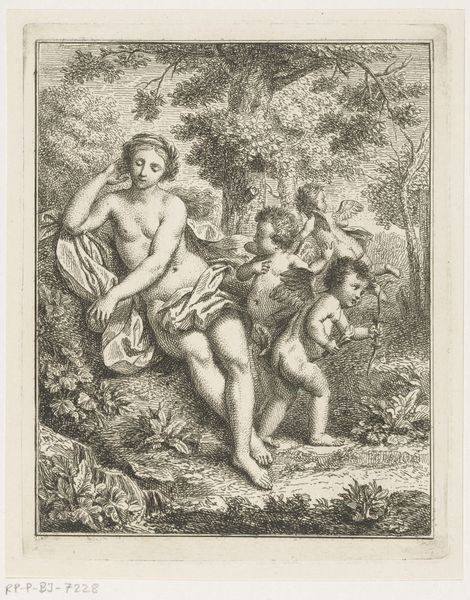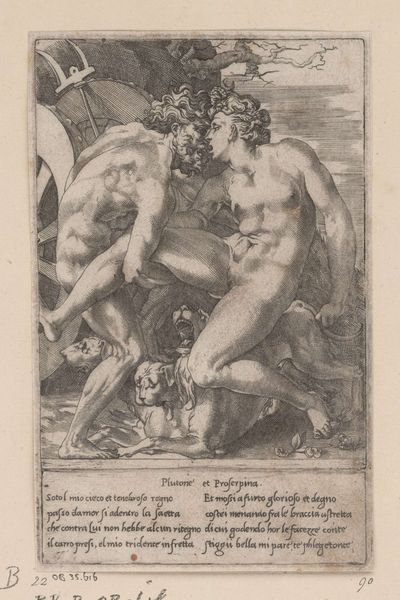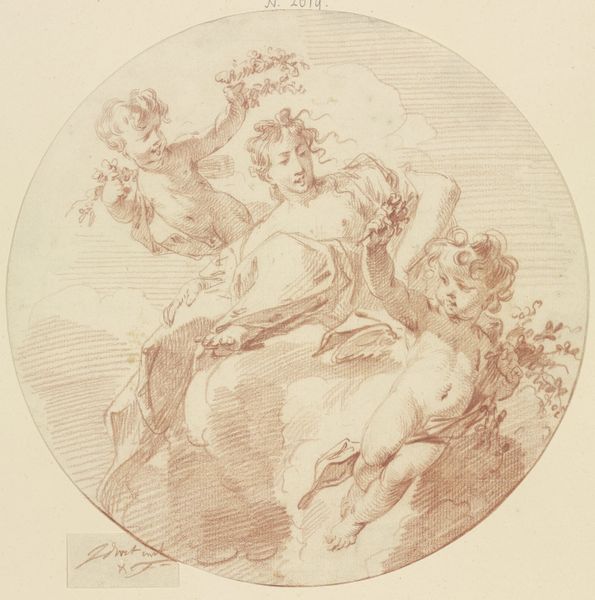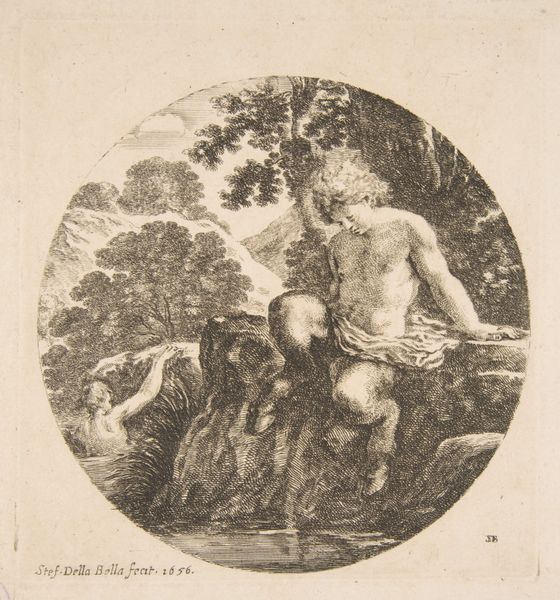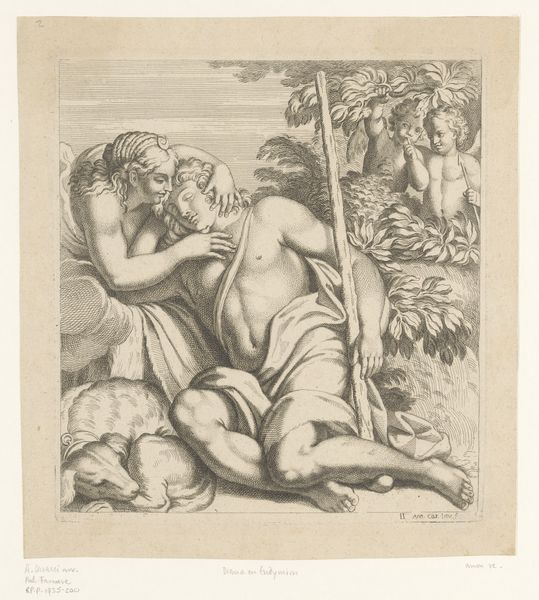
etching
#
allegory
#
baroque
#
etching
#
figuration
#
pencil drawing
#
genre-painting
#
italian-renaissance
Dimensions: height 227 mm, width 224 mm
Copyright: Rijks Museum: Open Domain
Curator: Here we have "Drunken Silenus" an etching crafted around 1597-1600, by Annibale Carracci. Editor: The composition gives me immediate sensations of debauchery and indulgence. There's something almost theatrical about the central figure sprawled out, attended to by these almost caricature-like figures within that striking circular frame. Curator: Absolutely, and this ties into Carracci’s place in the late Renaissance, when mythological scenes were infused with renewed vigor, moving beyond mere idealized beauty. The etching medium also served a distinct public, offering accessible artworks that could be widely circulated and critically considered. Editor: I think we also need to consider the patriarchal framework inherent in the imagery. Silenus, typically seen as wise, is reduced to a state of utter helplessness. How might the consumption and powerlessness represented here echo or challenge established societal expectations of masculinity and leadership at that time? Curator: That’s a complex question, but certainly, the portrayal challenges classical ideals of the noble hero or wise sage. In a way, it mirrors the emerging humanist shift of focus in art at the time that human flaws are actually inherently interesting. Editor: But where does this portrayal situate within existing power dynamics? It may highlight the flaws of established norms by representing drunkenness, yet isn’t the mere portrayal itself an enactment of social control by presenting a weakened figure, reinforcing a hierarchical order of power. The use of caricature serves to 'other' him in some sense. Curator: Well, let's not forget the role of patronage. These types of works often were supported by aristocracy and wealthy elites, they liked to collect these genre paintings as a symbol of their own superiority. They likely derived a strange kind of satisfaction or lesson from the cautionary tale the artwork provided. Editor: Precisely, a lesson carefully crafted and presented to reinforce social distinctions. Exploring how representations reinforce power dynamics helps deconstruct, if only slightly, our received understanding of canonical pieces such as this one. Curator: That’s something worth pondering – how the images of drunkenness and helplessness that were popular during that time influenced society and continues to this day. Editor: Indeed, looking beyond the artist's intent allows us to question and renegotiate our relationship with art in an age rife with societal inequalities.
Comments
No comments
Be the first to comment and join the conversation on the ultimate creative platform.
